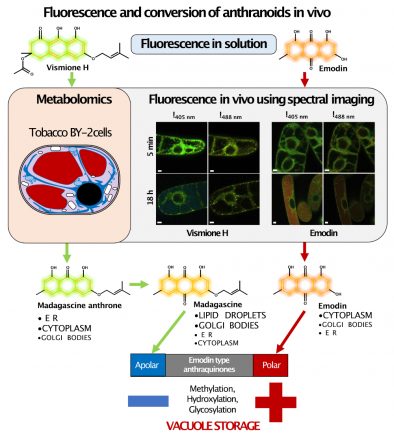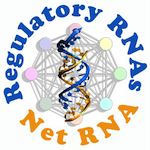Used in traditional African medicine, Psorospermum glaberrimum is a plant of the Hypericaceae family that produces numerous anthranoids including Vismione H, an antimalarial and antileishmanial agent. The researchers took advantage of the fluorescent properties of the molecule to develop an analytical approach to monitor its localisation and possible metabolisation in a cell. The combination of spectrofluorimetric analysis, spectral imaging microscopy and untargeted metabolomics analysis allowed the tracking of anthranoid-derived metabolites in vivo in cultured BY-2 tobacco cells. This research shows distinct metabolisation and compartmentalisation between anthranoids prenylated (i.e. Vismione H) and non (i.e. Emodin) in C3-position.

The use of this approach in malaria or leshmaniose parasites could help identify the molecular targets of anthranoids, a difficult search, but necessary for the validation of any therapeutic use.
This work was carried out in the lab’s of Hubert Schaller at the IBMP and of Catherine Vonthron-Sénécheau at the Laboratoire d’Innovation Thérapeutique as part of the PhD thesis of Quentin Chevalier. It was published in the revue Metabolites on 25 August 2021.















